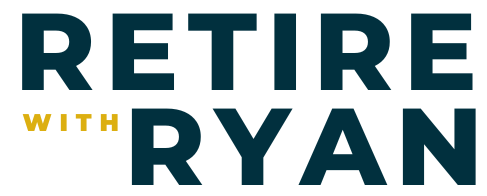Getting Emergency Money From Your 401k, #238
In an ideal world, everyone should aim to keep 3–6 months of living expenses in an emergency fund. But let’s face it—building that kind of safety net isn’t always easy. For many pre-retirees, most savings are tied up in retirement accounts, leaving limited options for unexpected expenses.
So, what can you do if an emergency arises? In today’s episode, I’ll walk you through how to access emergency funds from your 401(k) and explore strategies to help you stay prepared for life’s unexpected challenges.
You will want to hear this episode if you are interested in...
[0:53] Do you have an emergency fund?
[1:35] Why you should hire a financial advisor
[2:38] The new IRS rule allowing withdrawals
[3:59] The requirements for withdrawal
[4:32] What are the drawbacks?
[5:08] Why you should build your emergency fund
How to get emergency funds from your 401K
Did you know recent changes make it easier to access your 401(k) funds for emergencies? These updates could provide a critical safety net when unexpected expenses arise.
Normally, you’d need to reach age 59½ to withdraw money from a retirement account without penalties. Otherwise, early withdrawals typically trigger a 10% penalty on top of taxes owed. But under a new IRS rule, you can now withdraw up to $1,000 penalty-free for personal or family emergencies.
Here’s how it works:
You’ll need to complete paperwork affirming the situation qualifies as an emergency, though the IRS doesn’t specify what counts as one.
You can only take one emergency distribution per calendar year.
If you don’t repay the initial withdrawal, you’ll have to wait three years before you’re eligible to take another.
These limitations are designed to safeguard your long-term retirement savings. Remember, the longer your money stays in your account, the more it can grow through compounding. While this rule provides flexibility, it’s important to carefully weigh the decision to withdraw from your 401(k).
Why you should build your emergency fund
While the new 401(k) emergency withdrawal rule provides some flexibility, $1,000 may not go far. It could cover emergency car repairs or a quick fix for your heating system, but it likely won’t cover a complete system overhaul. That’s why building your own robust emergency fund is so important.
Here’s how to get started:
Set aside a small amount every paycheck. Even $100 per pay period can add up over time.
Use a high-yield savings account. These accounts currently offer interest rates of around 4%, helping your money grow faster.
Consider other options. You could also use a money market mutual fund or a brokerage account to earn interest on your savings.
By putting your money to work, it won’t just “sit” idle—it will grow while remaining accessible for emergencies.
Next week, I’ll share 9 more ways to access money from your retirement accounts without a 10% penalty. Don’t miss it!
Resources Mentioned
Subscribe to the Retire with Ryan YouTube Channel
